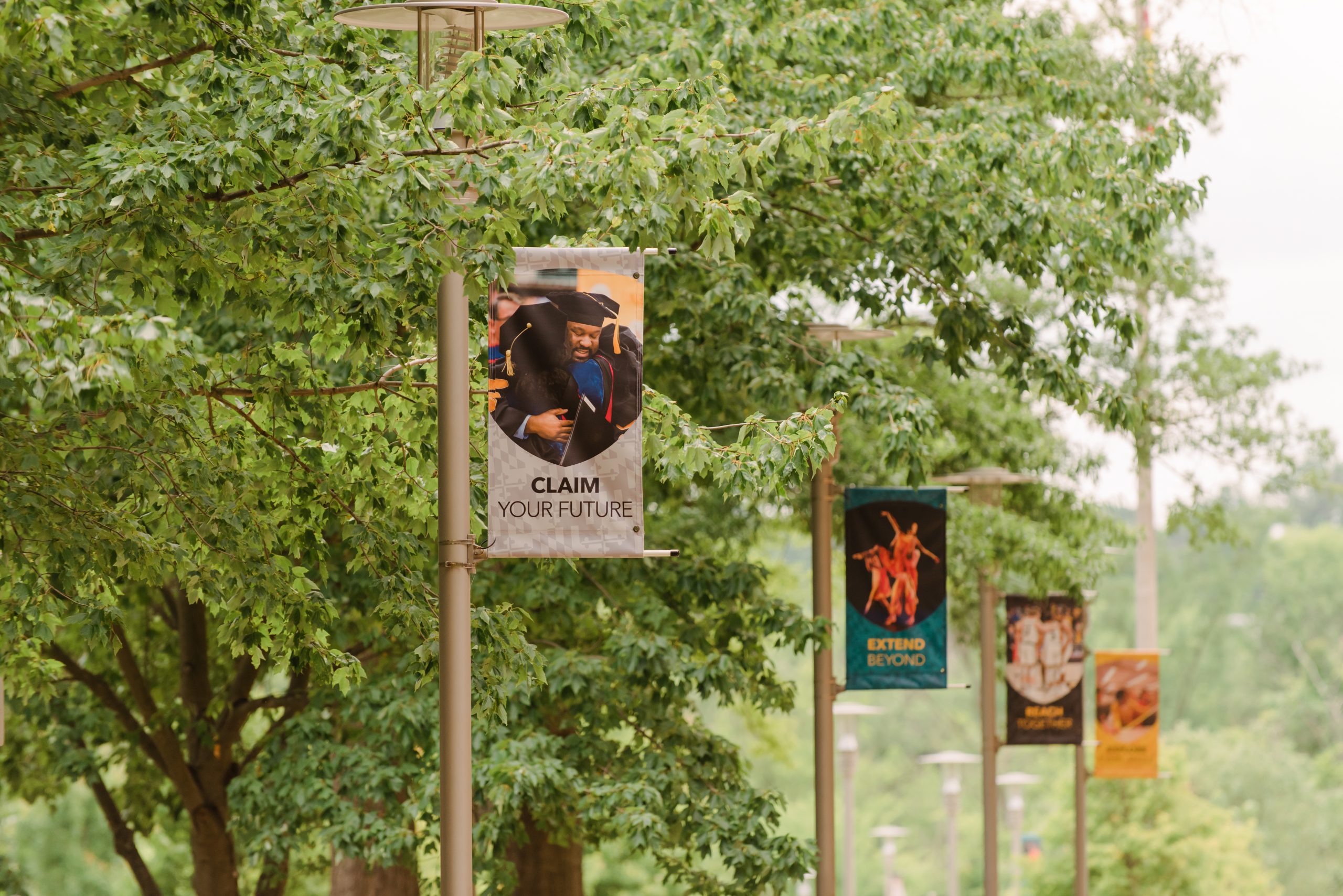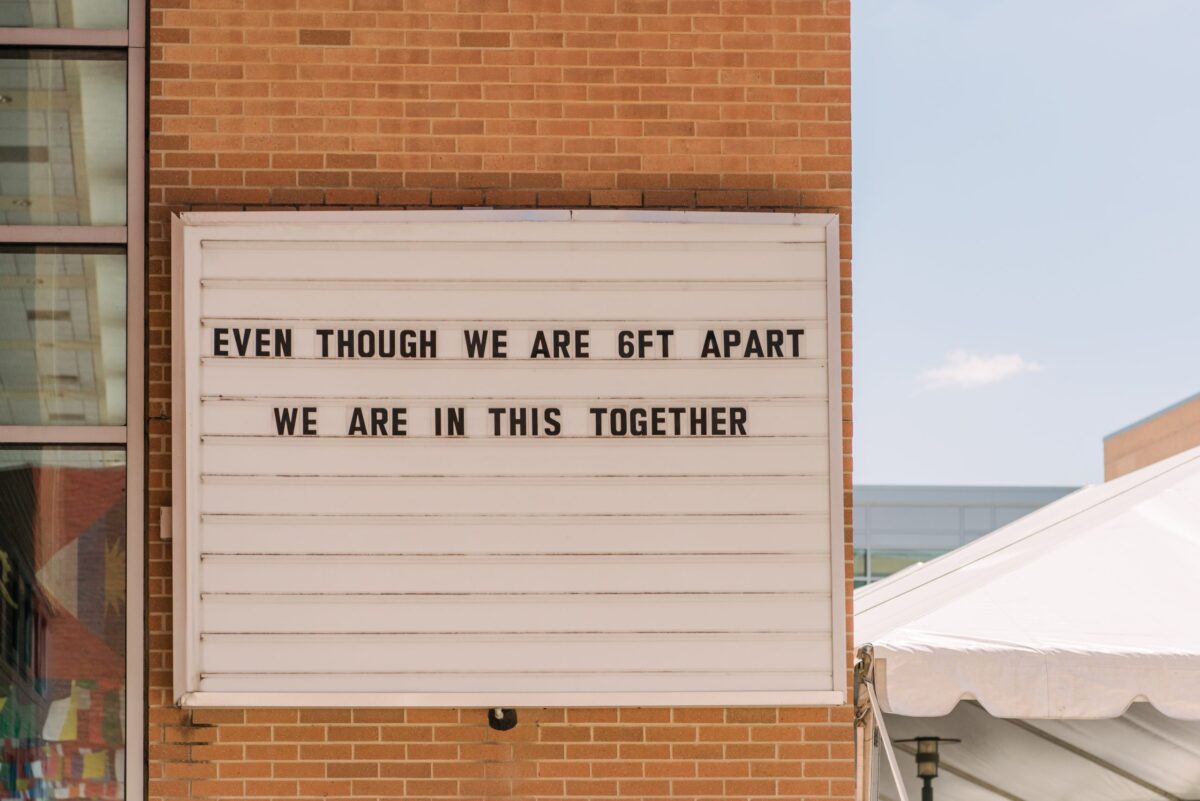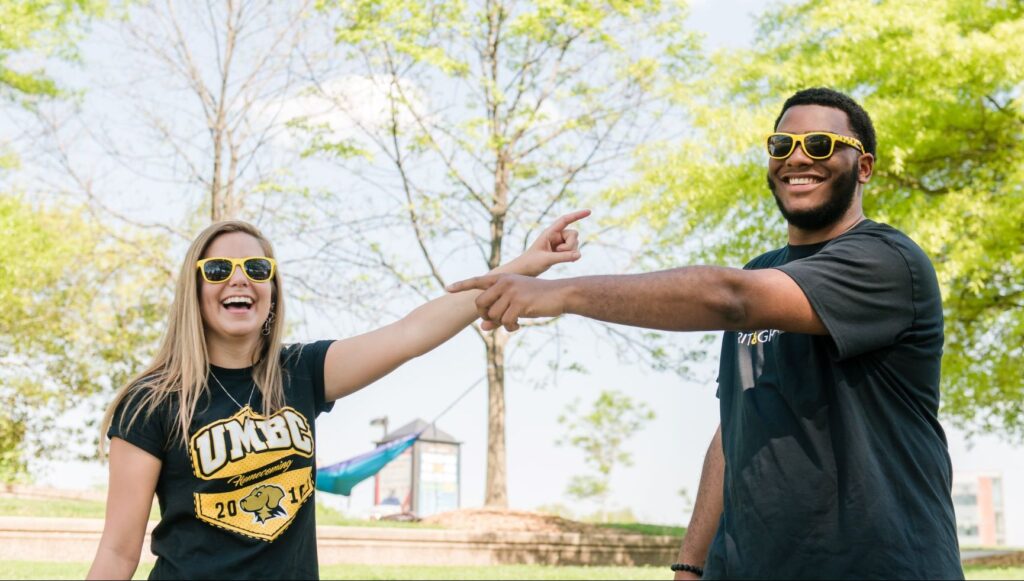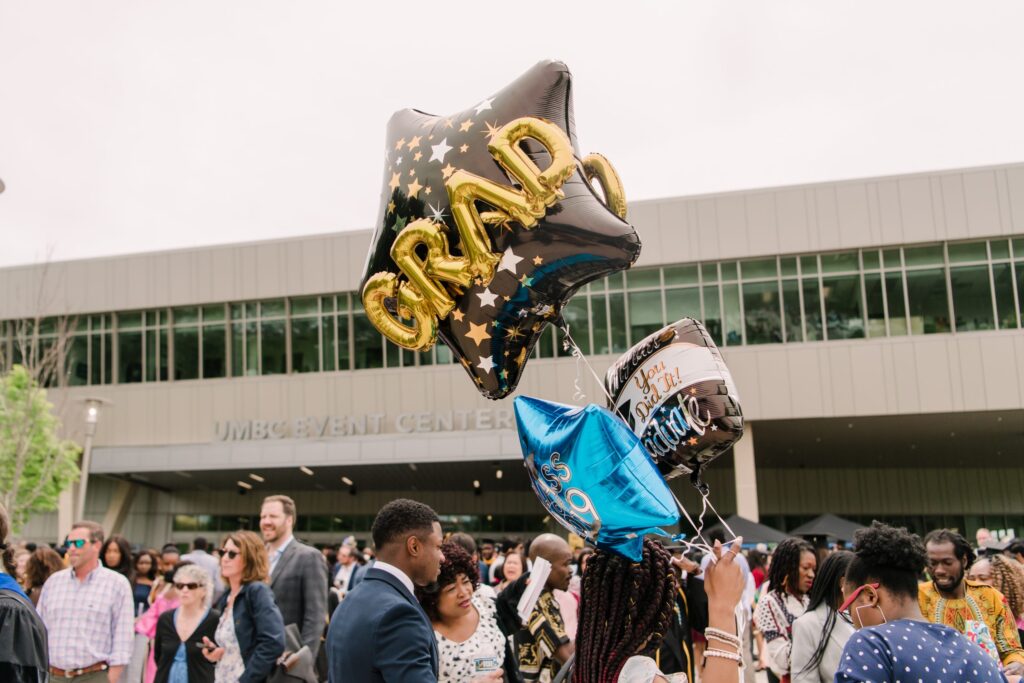As the nation confronts generations-worth of structural racism, UMBC’s community is digging deep to learn, reflect, and take action for long-term change.
* * * * *
When Jasmine Lee describes the challenges of the last few months, she talks about them in terms of “multiple pandemics at once.” The first was COVID-19, which continues to wreak public health and economic destruction, and leaves many questions ahead unanswered.
The second, says Lee, director of Inclusive Excellence in the Division of Student Affairs at UMBC, was the swell of despair and outrage surrounding not only the death of George Floyd in late spring, but the ongoing deaths of Black people, and the rise of a collective desire for action. While so much of what needs to be done is systemic in nature, the impact has felt incredibly personal for many, including Lee.
“I’ve heard some use the term ‘intergenerationally tired’…and I think, particularly for Black folks, that is very real,” says Lee.
In the wake of nationwide protests and a pronounced desire to make lasting change, UMBC’s communities have harnessed distance learning tools in recent weeks to host workshops, trainings, and discussion circles on everything from how to become better allies and disrupt systemic racism, to smaller specific meet-ups meant to offer support during these difficult times. Further action from UMBC’s Office of Equity and Inclusion, with partnership from many other groups on campus, is also in the works.
“There’s a very clear sense of exhaustion in many forms due to historical and generational trauma that continues to be seen today,” says Lee, one of a handful of faculty, staff, and students to have spearheaded workshops in recent weeks. “But in the midst of it all, I’m seeing people who are taking up the mantle in ways that they haven’t before.”
Banding Together Through Learning
With the university closed to most in-person interaction, one might assume it would be difficult to implement weighty discussions of this sort. However, within days of the first nationwide protests in early June, the myUMBC network lit up with opportunities for online training and learning, and ways of expressing frustration and hope.
Amelia Meman ’15, gender and women’s studies, assistant director of the Women’s Center, wrote an early post on the center’s blog about “calling in white people and non-Black people of color” and providing resources to help allies move from being performative to authentic. The center, along with UMBC’s Mosaic Center and other campus groups, have also offered a variety of learning and self-care programs for students, staff, and faculty.
Mid-way through June, staff from the Division of Student Affairs led more than 70 members of the community in a “Virtual Circle for (Aspiring) Anti-Racist White Allies.” Co-facilitators Jeff Cullen, director, Student Conduct and Community Standards, and Lauren Mauriello, assistant director for Residential Life, shared information about White privilege and discussed the span of behaviors that encompass both overt and covert White supremacy.
“We thought we would create space for 50, and we quickly rocketed past that,” says Cullen, who along with colleagues has helped to ramp up Restorative Practices initiatives on campus over the last five years. The June discussion group now intends to break off into smaller groups to tackle questions that came up in the circle, many of them centered around ways of dismantling racism on the individual and system levels.
“These are the questions that people have, so let’s start there…so maybe in the coming weeks and months folks can get together and begin tackling those problems and questions” in a grounded and purposeful way, Cullen says.
More than 600 community members tuned in for “The Many Faces of Structural Racism,” a panel including Black professors of psychology, education, and political science, as well as staff working in Student Affairs and the Office of Equity and Inclusion. Led by Kimberly Moffitt, director and professor, Language, Literacy, and Culture and affiliate professor, Department of Africana Studies, the conversation covered everything from the histories of structural racism in education and voting, to ways of breaking down these persistent barriers.
UMBC Student Government Association President Mehrshad Devin ’22, biology and physics, attended the panel knowing that students were interested in getting and staying involved in between semesters, and hoping to find routes for his own work within the SGA.
“The panel answered a myriad of questions regarding how UMBC is dealing with these concerns and helped ease students’ minds a lot,” says Devin, who found what he heard aligning with his own plans. “It was heartwarming to see that the university was actively listening to the members of the community and making the changes they saw fit, and doing so in such a quick manner.”
Lee also held a very well-attended two-day workshop on “Cultivating Skills While Disrupting Racial Injustice,” which invited community members of all backgrounds to examine steps they might take to disrupt structural racism, explore options for active allyship, and more. As a university, it is important to understand what needs fixing so action can happen, says Lee, from standard implicit bias training, to expectations for hiring.
“Part of action is acknowledging that it’s okay for people to be in different spaces and at different levels in this progress, and providing the appropriate scaffolding in education and training and accountability that meets every single person wherever they might be,” says Lee.
Steps to Structural Change
Without action, talk does little to change things. And, as Keisha Allen, assistant professor, Education, noted during the “Many Faces of Structural Racism” panel, now is the “time to get to work!”
In late June, UMBC’s Office of Equity and Inclusion (OEI) rolled out a new Inclusion Council, made up of faculty, staff, students, and alumni. With a promise of “living out our UMBC values and…taking action,” the group will meet monthly to create and enact a plan for the university based on feedback acquired from the entire community.
Candace Dodson-Reed ’96, English, chief of staff and executive director of OEI, is ready to look at this time as an opportunity to continue to make lasting change. As an alumna of color, she says she has deeply felt the frustration and trauma shared by so many.
“I think the question for many of us here is how are we at UMBC going to look in the mirror and make incremental changes—both short-term and long-term—to get at the challenges that we have on our campus,” and beyond, she says. Among the goals of the new Inclusion Council will be to develop a specific roadmap of change.
“These challenges have been going on for a long time in our country, so it’s acknowledging that this is traumatic, and then also a sense of what we can do to make things better on our campus” she says. “I’m feeling that from our Black community, but also from all kinds of people who want to be allies, and who want to show up in this work.”
Updates about the Inclusion Council’s work will be made regularly on the OEI website. The group will meet once a month and build out work groups and subcommittees including folks from across UMBC.
Devin, one of several students to sit on the Inclusion Council, is encouraging students to stay engaged. He is also seeking new students to serve on Council work groups and subcommittees.
“My biggest advice to students is to reach out and voice your opinions. Your voice matters,” he says. “Admin, faculty, and student leaders at UMBC will listen to you and will help you achieve the change you want….It is more crucial now than ever for students to stay engaged with everything that is happening at UMBC and around the world.”
UMBC President Freeman Hrabowski mirrored this sentiment in his closing remarks at the “Many Faces of Structural Racism” panel, urging the community to listen, to vote, and to be willing to look at oneself—and one’s everyday actions—with an honest eye.
“I would challenge us all to look in the mirror. This is not a time to be defensive, it is a time to realize that we can be much better,” he told the group. “There is much to do on every level…it’s not enough to say what we have done. The question is what has not been done. To listen to the voices of our faculty and our staff, and most importantly our students….There are many ways to be involved. UMBC is a special place and we can be even better.”
* * * * *
Header image by Marlayna Demond ’11 for UMBC Magazine.
Tags: Resilience




